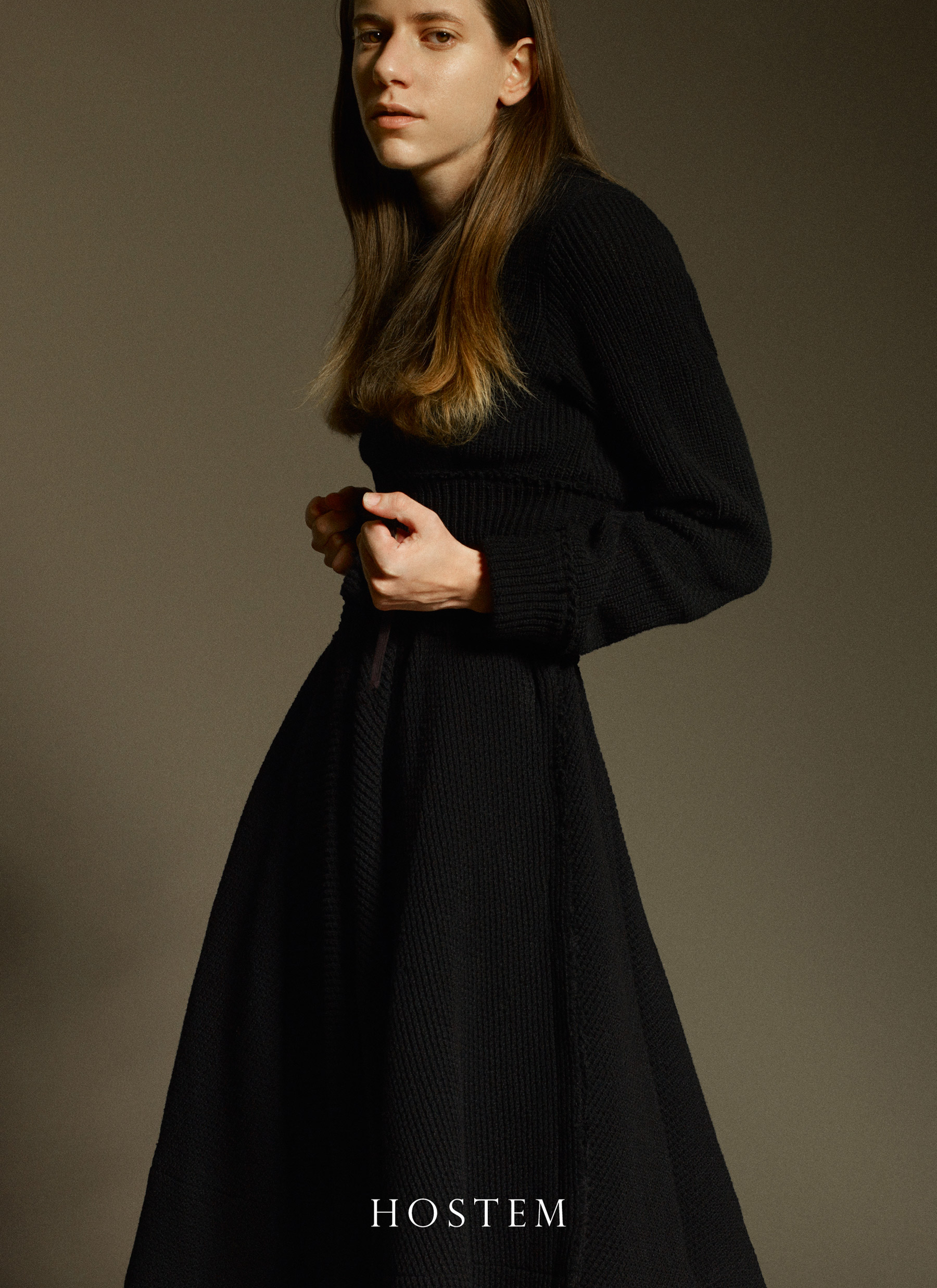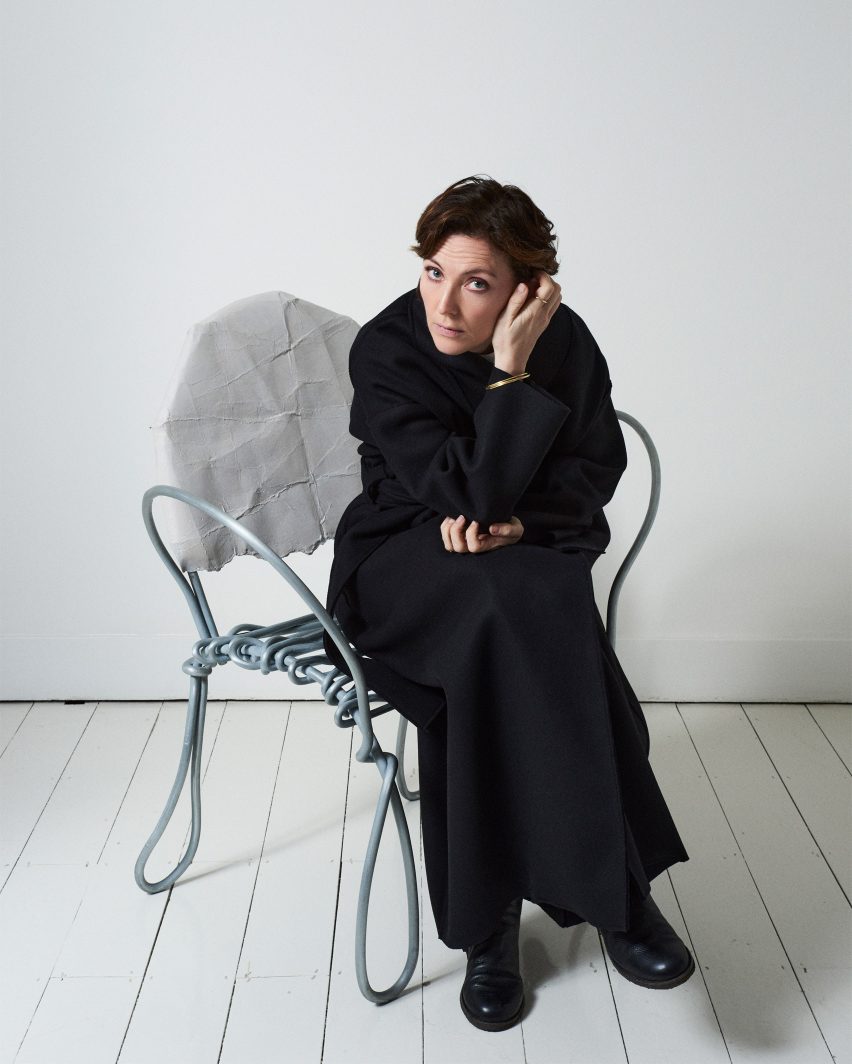The Hostem
Experience
by Nabil Aliffi
The Hostem
Experience
by Nabil Aliffi
For 21-year old James Brown, opening a fashion concept store was never foremost in his ambitions. By a turn of luck one day as professional footballer, he sustained an injury that would shape the course of his life to become one of fashion’s most visionary entrepreneurs. Now, at 26, his revolutionary concept store on Redchurch Street, Hostem, carries coveted brands such as Rick Owens and Thom Browne. Brown maintains the edge of his concept store through a robust retail philosophy that lauds store experience as the ultimate novelty. Along with his ambitious creative team, he challenges what it means to experience retail, viewing the destination store as an evolving enclave for the local creative community.
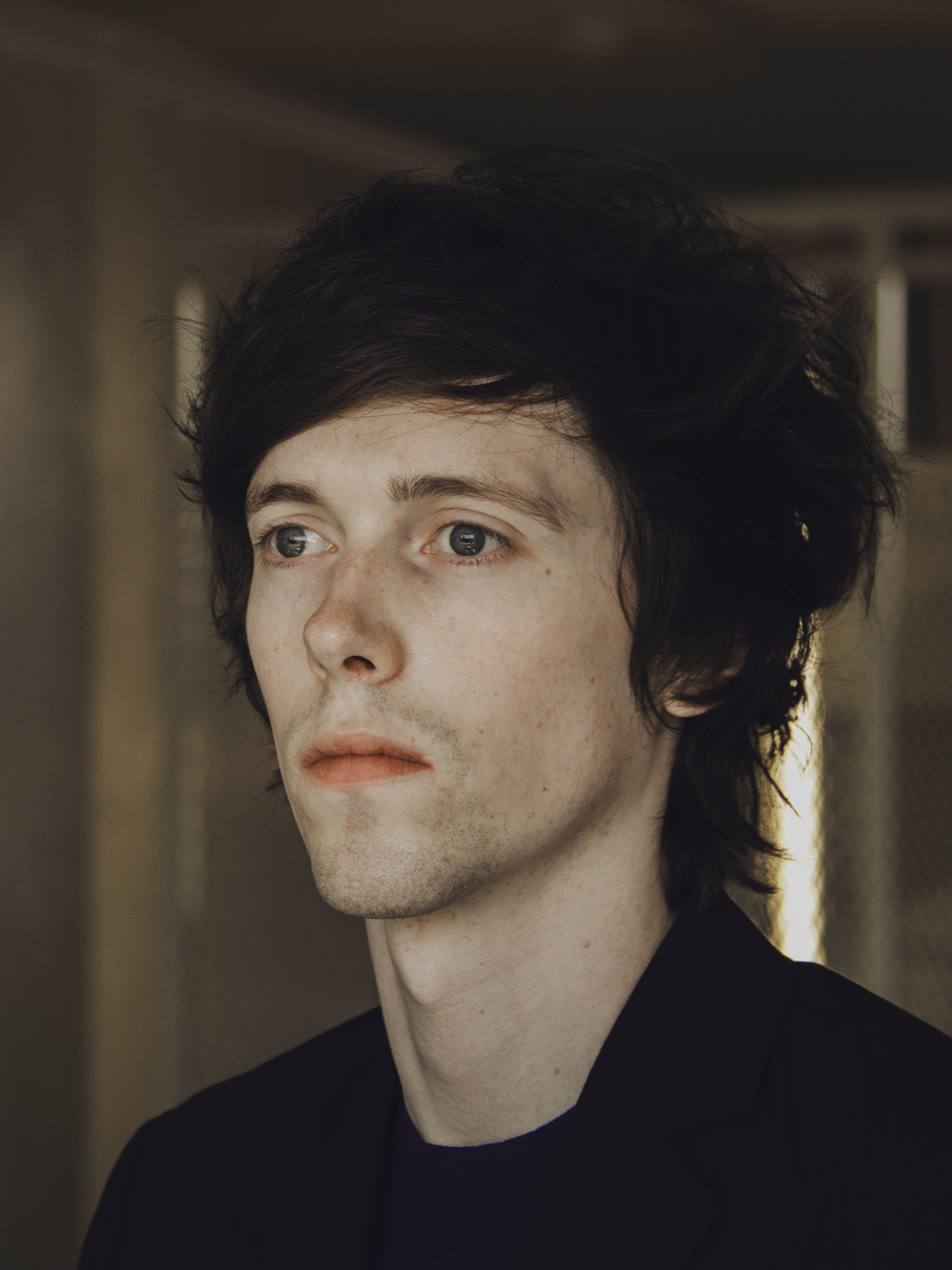
First of all, what made you want to open up the shop?
My father was a Mod, so he was always having his suits made on Savile Row. From a very young age, I was obsessed with shops. Not necessarily with the products, but more with the environment, and how these environments made me feel. I grew up in London, where I used to shop at The Library as a teenager. So, from a young age, I was really passionate about the experience.
I was also a professional football player until the age of 21 when I had a really bad injury. I snapped my Achilles tendon and decided after that I didn’t want to continue. Then it was about what I wanted to do next. At that time retail felt very stale. There wasn’t anything that was particularly exciting. So I began to look everywhere for a space! We went to Mayfair, we looked in Notting Hill, SoHo and Dalston but none of these areas felt right.
Then a good friend of mine suggested Redchurch Street. I remember the first time I walked down here it had this amazing atmosphere. It had this almost beautiful sense of decay, a kind of serenity to it, and a real strong history and heritage. And that was it really.
Let's talk about the first day. What was it like at the very beginning? Did it already feel like a full store?
It was very, very small. We had literally the one floor, and down here in the basement [The Chalk Room] used to be our office. It was rather haphazard. We pretty much only had five or six rails of clothes at the time.
What was it like before you moved in?
Oh man! We have never actually given this to anyone, so maybe it would be quite interesting to give it to you guys. It was just completely sterile. It was completely devoid of anything of the original Victorian building or that of the Second World War. It was like a white cube, literally, with horrible flooring but I walked into the space and immediately felt something towards it. The building was owned by an amazing Bangladeshi family. I think for almost 40 years, the ground floor at the time was a sort of gallery. When we first moved in, we didn’t own the building. We just rented the ground floor and above us for the first year or so we had these crazy squats, like a crack den, absolute madness above us. That was part of the charm to it, I suppose. It just all started from that point on. We had already acquired this space, and then I stumbled upon JAMESPLUMB.
Yes, the people who designed the store?
Yeah, the husband and wife team who went to Wimbledon College of Arts and did their BA Degree in Sculpture. I chanced upon them at Tent London, which is this design fair at the Old Truman Brewery. They had a tiny little stand and there was something that I was very drawn to. We were very young at that time: they were in their early twenties, and I said, ‘look, would you guys like to do the interior?’ At that point, there was no brief at all. Literally, I was like ‘here is the space’ and it was very organic. And finally, the family who owned the building was moving back to Bangladesh, and said, ‘Would you like to acquire the building?’
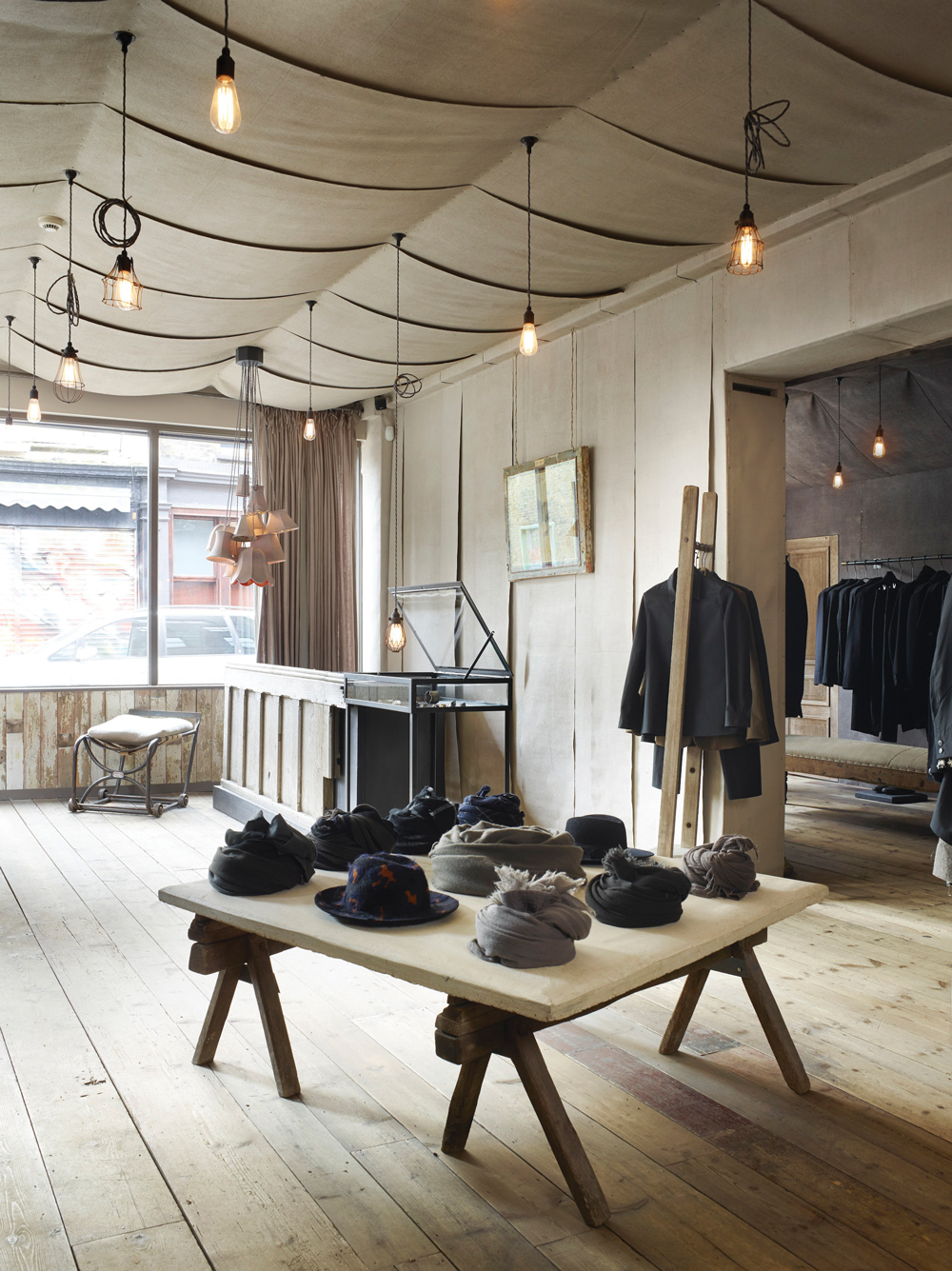
So we were very fortunate to be able to do that. And ever since then, we just continued to expand.
Do you remember some of the brands you used to carry at that time?
Yeah! We still have most of them. Pretty much we had Geoffrey B. Small, we had Rick Owens, we had Visvim, we had Casely-Hayford. There were just seven or eight brands, we didn’t know what to expect. I remember in the first days, opening up the doors to the street, and we had a mixture from drug dealers to homeless people to hipsters, just a real mix of people. Everyone was not quite sure what they were walking into or what it was. We had no set plan, it was just kind of ‘okay, you know let’s just go for it’. And we grew.
You started off as a football player, so was fashion or retail ever like a second interest that really took form?
I think so. I was playing since I was the age of six. It’s kind of all you do. It takes up such a big part of you. I was always interested in culture, art, food etc... and it got to the point when I was 21, where I was at a pivotal point in my life where I had to ask, ‘do I want to dedicate the next 20 years of my life doing this or do I actually want to see what else is out there and explore other interests?’ It was a big decision to make, and I think that people were surprised by it but its one I do not regret at all.
You must be quite competitive?
I think I am very competitive. Yeah... yeah! I always wanted to do the best I can, and maybe more so than competitive, I am very critical of myself. So I am always very critical of what I do and analyse every thing and I think that has definitely translated into this.
First thing that I noticed when I walked in, like I said, was the sense of honesty, which is quite important to Vulture as well. 'Honesty' can obviously mean many things. When it comes to product design or an environment, there is always that purer source. It is not like a secondary one that you reference. So, that is what I really want to get a sense of; what that source is, what is at the heart of Hostem?
I think for me, I am quite fascinated by the word ‘luxury’, and what people’s perceptions of it are. I think luxury can mean so many different things. A material like the floorboards that we have upstairs, they were from an old re-claim yard and are cheap pine boards, but we spent time restoring them, bringing them back to life. All of the boards were laid by hand. Same with the wall coverings, that's just hessian sacking that you get from potato or old money sacks. Myself and Hannah and James (the designers,) hand-painted every panel you see up there and we hand-sanded and later tacked the by hand to the walls. For us, we didn’t have a huge budget to do the interior. It was done in a very small way. We just wanted to treat things very preciously; give them attention to detail. I think that translates to the brands we work with. They are not mainstream brands; they are designers who may only sell to 12 stores in the world and they might construct each garment by hand. It might not be the most amazing or expensive fabric, it might only be basic cotton, but it’s been hand-stitched, hand-finished, hand-dyed and then treated again. So again it’s that attention to detail and time that goes into the production.
Yeah, it’s like an interesting take on heritage. It’s not like a caricature of the term, for instance, like ‘British heritage’, that entails suiting, checks and what not. Even from the way you described how this building was acquired, there was a lot of respect for what came before, and I think that translates into the way you curate your products as well.
Yeah, I mean definitely. I think with the ground floor especially, five years on, now looking back, there have been a lot of people taking references from it. But I think for us at that point, we wanted to reference the past and elements of old London, and we are very aware of being in this area especially. It has great heritage and history. Like Old Nichol Street, the estate behind there was the first public housing after the war—it’s now Grade (II) listed, you know, it’s got an amazing [story]. When you research into the area and [find] they were all factories around here. They were garment factories like those you have in Brick Lane with the old Hugenot houses where they used to dye the silk and where Hugenots used to live in the weaver’s loft on the top floor. It was a very honest area, and we just wanted to reflect that. I think for us if we had done something that was very glitzy and sort of shiny and new, it would have felt very incongruous to its setting. We just wanted to use materials that would have been here in the past and treat it kind of the same way while putting a contemporary spin on it.
You said that what intrigued you was the meaning of luxury. So now that Hostem is in its sixth year, how has that notion evolved since?
I think for me, the one thing that I have started to feel towards luxury is that it is more about the experience than anything now. Before, I had to go to The Library to buy Carol Christian Poell or Carpe Diem there was no Internet then. If you wanted those brands you had to go and seek them out. Now, especially from a fashion standpoint, that's completely changed. Whether you are a niche brand or whether you are a big luxury house, you have, because of the Internet, access worldwide. There are great stores all over the world selling those products. There is no longer a niche environment. So for me, I really wanted to focus on the experience, because I think it is very hard now to just be innovative and to specialise when it comes to product. There are so many stores out there doing it, and doing it well. For us, it is very much experience, experience, experience. That's why we chose this area as well, because it is unexpected, and people who come through our doors won’t necessarily know what they are walking into or expecting it.
It is quite a seamless experience.
It is! Yeah! That is definitely good to hear. Once people walk into that space, we want them to have a whole new experience of what retail can be. It’s very private, very personal. It’s very calm.
This brings me to the next question. Obviously now that there are more concept stores around the world, and a lot of them are actually taking their presence online, and some of them are very big, like SSENSE and Mr Porter. So, where does that position a retail store, like Hostem for instance? And I think you were onto it, like you said 'experience, experience, experience'.
Online stores like LN-CC and Mr Porter, I mean they are great. For me now it’s very separate; the consumer either wants experience or wants product. And I think there are places that suit both needs. You have the consumer who just wants that jumper, delivered within three hours in London, and he doesn’t want an experience. For us, I don’t see ourselves competitors of other fashion stores. I see our competitors to be restaurants or galleries or theatres, because to me they are still selling the experience, not just product.
That is a great way of looking at it, because one thing that is quite exciting about Hostem as well is that when you go in—of course you have your staple Rick Owens, you have your Thom Browne— but there is also that off chance that you find something that you might not have seen before.
We really try and focus on that. It’s becoming very difficult to find those brands. But I would say that we’ve got a handful of them that we work very closely with, like Sebastian Tarek. We are his only outlet. And it is the same with brands like Geoffrey B. Small, I mean he is in 12 stores all over the world. There is also this amazing brand called P.R. Patterson and it’s only us and one other store in Australia he works with he is based in Bethnal Green 5 minutes from the store so its great to be able to support and work so closely with people who are located around you. We really try and develop our relationships with these young brands, nurture and support them. They want to grow organically, so an environment like this suits them.
"I see our competitors to be restaurants or galleries or theatres, because to me they are still selling the experience, not just product."James Brown
Let’s talk about the elephant in the room, the fact that you started when you were just 20? 21! ... Yes, it’s a brave move. Not many people can say that they have started a store. It’s incredible what you have achieved in five years. Maybe you might want to talk about the highs and lows of starting really young and starting small?
I think definitely the positives were when we first opened. I mean it’s great. It's a family run business because both my mother and my father helped out. My mum is an incredible businesswoman, so she looks after the accounting side of things, and she’s been a huge supporter. And we have Alex [Wysman]. I don't know if you have met, but he is here and he used to be assistant general manager at Dover Street Market. He joined and he has been with me from day one. We’ve grown really slowly and organically, and that has always been a conscious decision because we weren’t sure what the reaction was going to be. But it’s been very much positive and very much about the people that are here, and about this very young team.
We’ve got Christie [Fels], who joined last year to head up womenswear, but has evolved into more of a Creative Director role working on special projects with me. I mean she is super young but that’s what its all about having your peers around you who are on the same page supporting and pushing each other. It's a very young and ambitious team, I think. Everyone is passionate about what we do, and each is given a lot of responsibility in the business. We’ve all kind of grown with each other. For me I am very much about people the store is as much about the team as is me.
How did you establish credibility of the brand Hostem? Honestly, some of the accounts you have landed, like Rick Owens, are very discerning and known to be very selective.
It was definitely a challenge for sure. I think it was a real positive that we have opened up in East London, because if we opened up in West London, we wouldn’t have the same access. Mark Quinn was a massive help—who is a creative consultant. He works with Harvey Nichols in Baku; The Number 4 in Kuwait he’s worked with COS and many other brands was imperative to the project and was very supportive of me; obviously I was a very young guy of 21, walking into these big brands, you know? Fortunately, we had a very honest proposal with some very rough hand drawings of what the space was going to look like along with a lot desire and ambition.
The store sketches?
Yeah, like very basic ones, like little scribbles. And we had little fabric swatches of what the interior was going to be. Some brands said no, and other brands were really supportive. The guys at Rick Owens are fantastic. Luca [Ruggeri] obviously, he knew the area, he loved the area and was very supportive. And we were very fortunate to have the support of someone like Dover Street Market we have a very good relationship with Adrian [Joffe] and Rei [Kawakubo] and now work with both Commes Des Garçons and Junya Watanabe across both mens and womens.
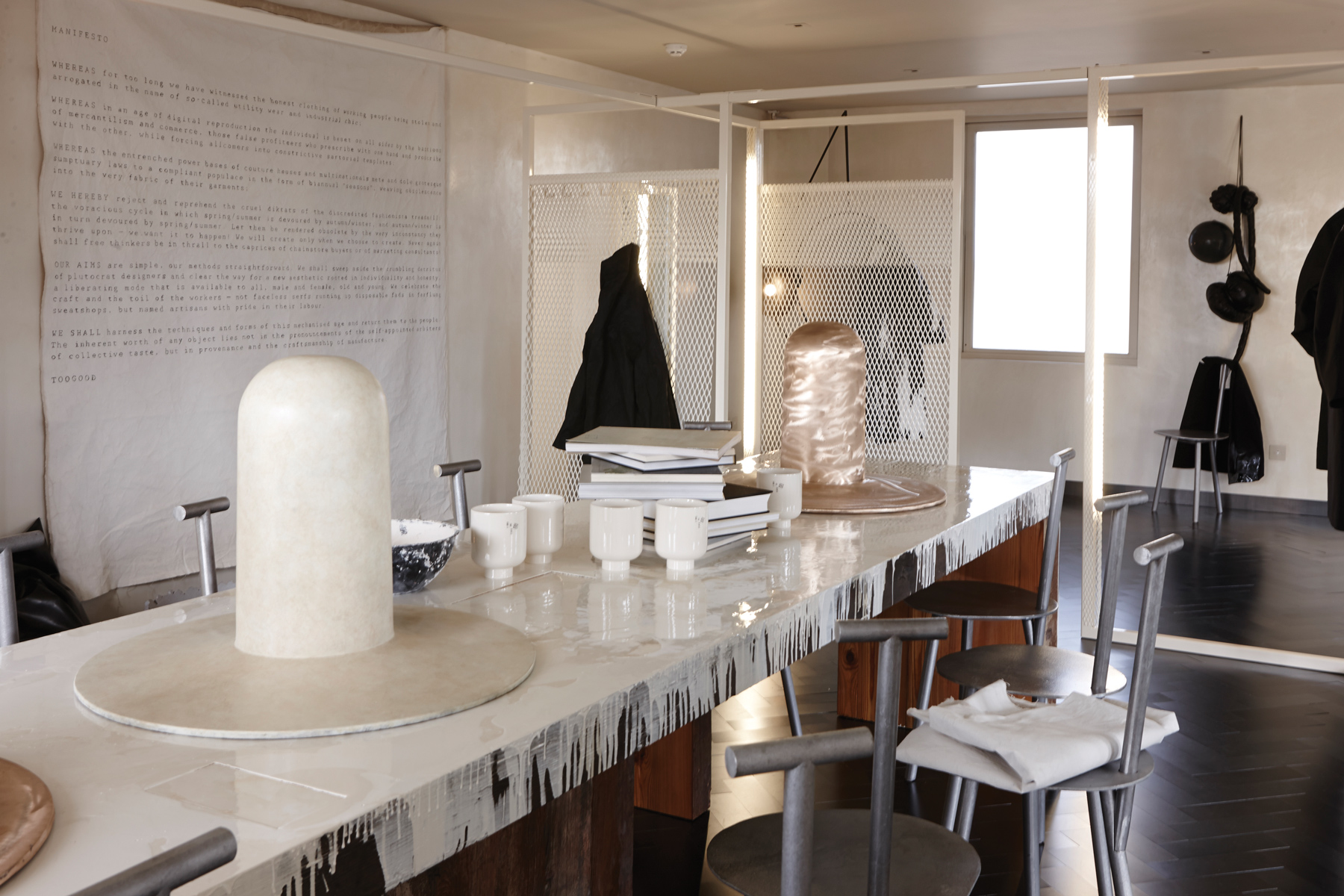
So do you think that this collective that you have built, this team, lends itself the credibility you needed to earn trust?
Yeah. A hundred percent. We started small, our orders were small, and you know. I think it was a young team and people really responded to that. It was a family-run business, it was slightly unusual, it was in a different area, so I think the brands were very positive towards that.
You feel it’s like a collective of like-minded people?
Yeah absolutely! I think that is the one very special thing about the store—that it is a community and that the customers, the people that work here they are all friends. We have got amazing artists on our doorstep. You have got Rachel Whiteread living down the road, Tim Noble, Sue Webster and Cornelia Parker. So it’s this huge creative community, and I think Hostem tends to be a platform for people to come in, meet each other and hang out. We also have dinners and that's how it happens really. It is very organic. There is no ‘we want to collaborate with this person or that person.’ It just happens.
Does that also translate to your approach to fashion? Because you don’t necessarily see it just as garment making, but rather an exchange of ideas, say between architecture, product design, furniture?
Yeah, definitely, [it] definitely cross-pollinates. I think in terms of the cultural landscape at the moment, fashion, art, architecture, have never been closer together. For years they have existed in their own space? But it seems now everything is becoming sort of very intrinsically linked. And I think the art world has always frowned upon the fashion world, but sort of secretly admiring it, yet never wanting to interact with it, and that has changed massively. And the same I think with architecture and architects. Now is a really exciting time to be part of that cultural world because it’s all there, everything is open, there is no closed doors, just so many possibilities.
That’s plenty to think about. Finally what do you think the future holds for Hostem?
I think for us, I have no desire to open up stores around the world. I want to make this the best it can be. And I think as long as we innovate, push the barriers and do interesting projects, I think we will be happy. I think in the future we might change direction in terms of what we are doing, maybe not necessarily as clothing focused as we are at the moment. Perhaps becoming even more experiential, and maybe even more design led and responding to the environment as we go. So provided we continue to do that, then I’ll be happy just to stay here.
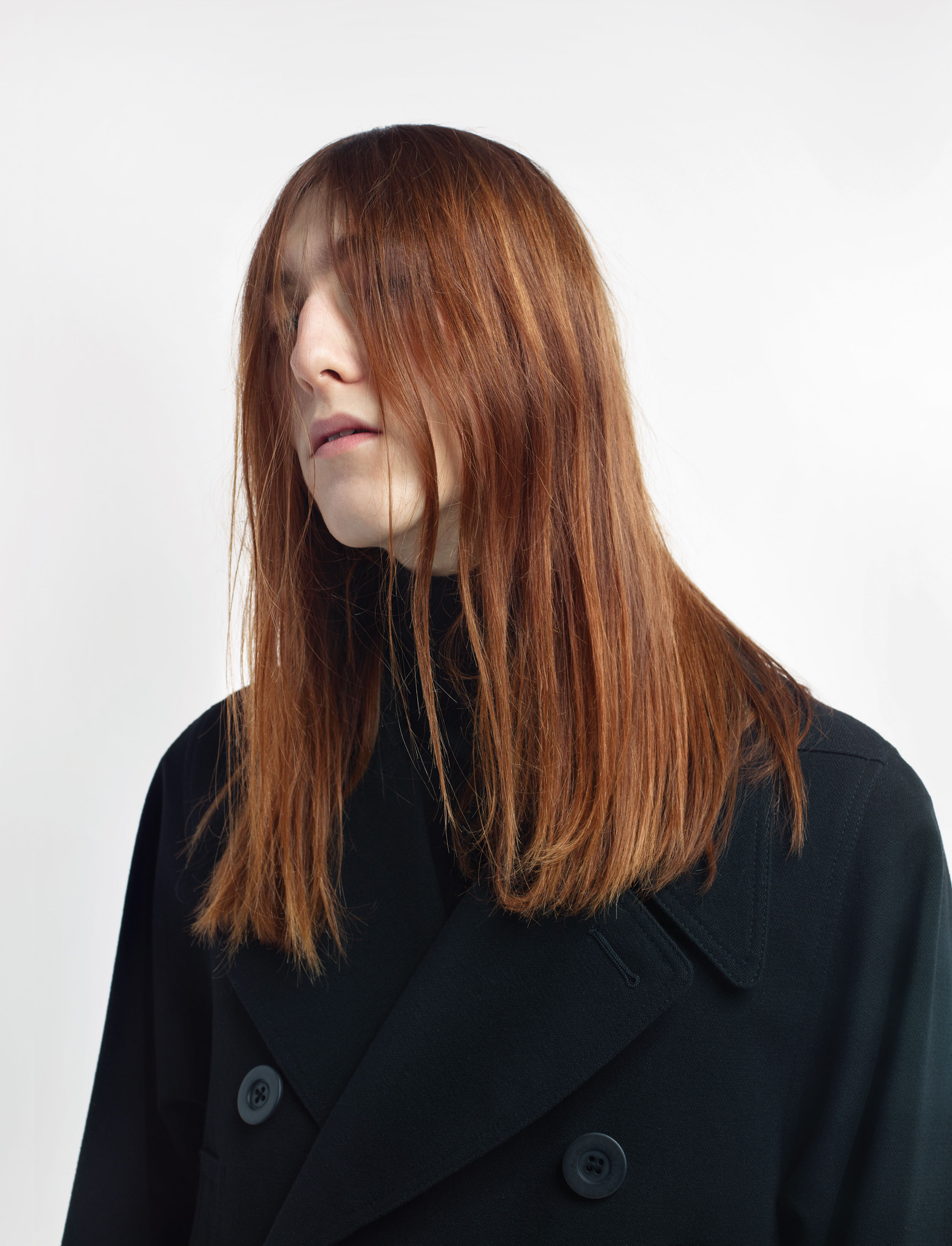
.jpg)

